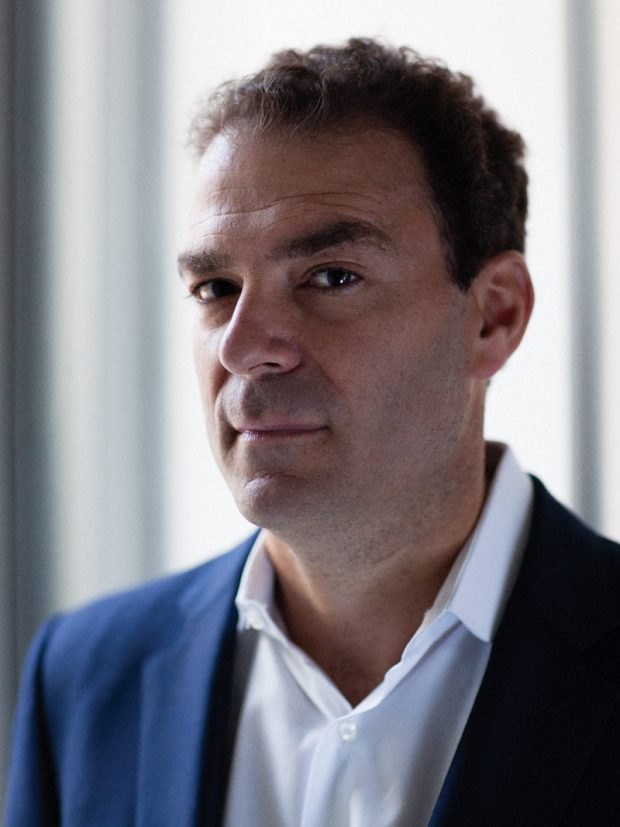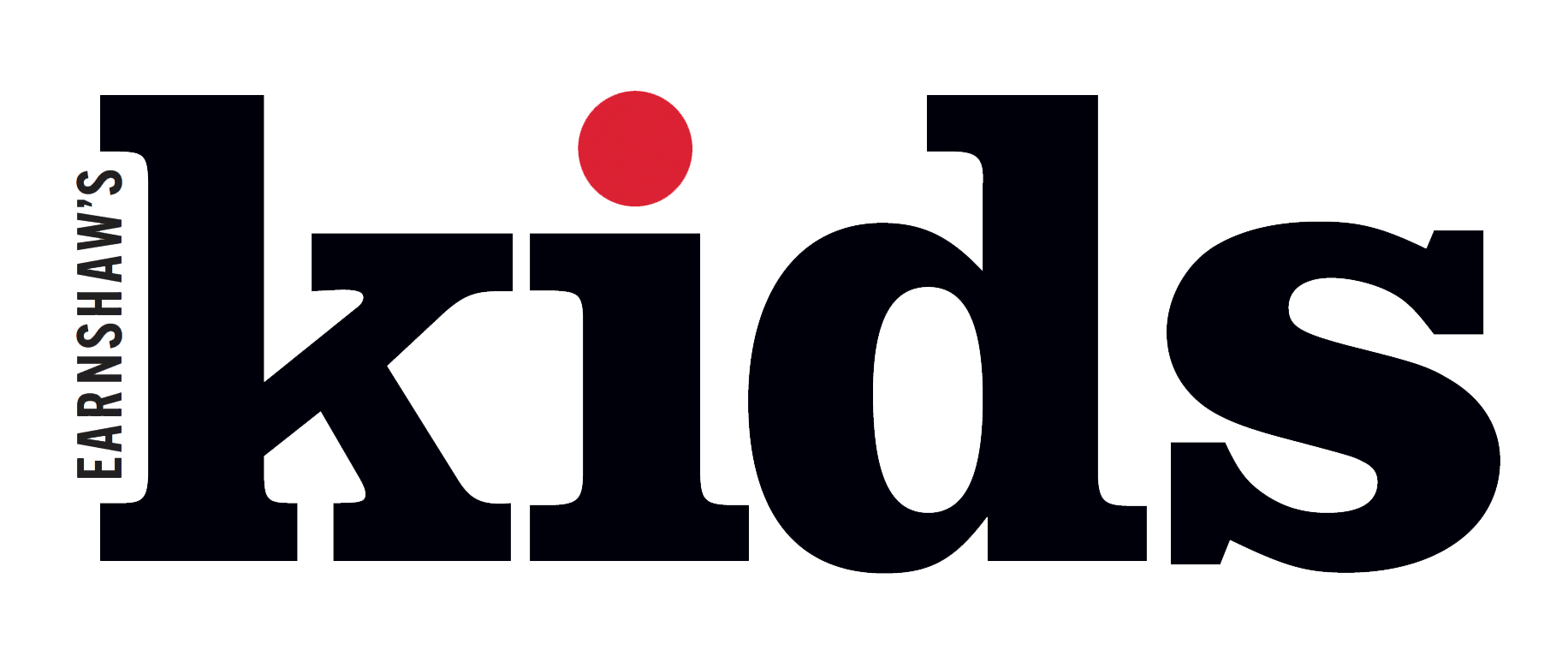Howard Kahn, executive chairman of the 127-year-old childrenswear-maker Kahn Lucas, on being nimble and predicting what will sell.
 Howard Kahn, fourth generation owner of Kahn Lucas, never intended to get into the family business. He was a political science major at University of Pennsylvania and thought he would be in some form of information technology, a far cry from little girls’ frocks and dolls.
Howard Kahn, fourth generation owner of Kahn Lucas, never intended to get into the family business. He was a political science major at University of Pennsylvania and thought he would be in some form of information technology, a far cry from little girls’ frocks and dolls.
That all changed 16 years ago, when Kahn’s dad—whom he refers to as his best friend—gave him the reins and challenged him to run the business. He accepted the task. The parent company to girls’, tween and teen brands Youngland, Sweet Heart Rose, Bloome de Jeune Fille, Emily West as well as Dollie & Me, a toy brand featuring 18-inch dolls and matching girls’ apparel sets, now has distribution in more than 3,000 stores.
Years later, seeing major changes both in wholesale and retail, Kahn made the strategic decision to bring in executives atypical of old-line apparel companies, starting with chief executive officer Dor Sela whom he tapped in 2015. His hope was that bringing in Sela, with a background in global consumer marketing for Mastercard and Procter & Gamble and others who didn’t necessarily hail from the childrenswear industry, would shake up the business model. The company also developed a consumer-centric data analysis platform it calls “Kahnalytics” that has been able to accurately forecast what trends will be bestsellers at retailers by region. That almost Amazon-like ability to predict sell-throughs is rare in the apparel business. Few companies, let alone a century-old apparel company, invest in the technology and research abilities that is standard in any young tech firm. It led to a joke by Sela that Kahn Lucas just may be the world’s oldest startup company.
Chat Room
Who would you invite out for a drink, dead or alive?
I’m incredibly inspired by Steve Jobs. There are so many people in business that I’d love to learn from—Henry Ford. Abraham Lincoln would be on my list.
What books are on your nightstand?
I’m reading a fascinating book right now called The Devil’s Chessboard by David Talbot. I really enjoyed Steve Case’s book, The Third Wave. Alec Ross, The Industries of the Future. That was a great forward-thinking book. I read Nailed, Lenny Dykstra’s autobiography, which was my junkie read.
What would people be surprised to learn about you?
I play in a men’s lacrosse league. There aren’t a lot of 47-year-olds that should be playing full contact lacrosse, but I love it. I really do love it.
Earnshaw’s sat down with Kahn to discuss “Kahnalytics,” the difference it has made in business and the future of apparel manufacturing.
How did you get into the apparel business? I was born into it, although when I was growing up, I had really no interest in it. No interest at all. But I was always very close to it. We’re a 127-year-old company. And I’m the fourth generation of owners. I was very close to my dad. Very, very close. I was a business person, and when I went to college, I started studying information technology, which in the early ’90s, late ’80s was really evolving. Walmart was the leader, so I went to work for Walmart. My dad called me up one day. Business was very challenging. This was probably in ’94. He said, “Business is tough. I’d love for you to come with me.” When your best friend asks you to come work with him, you say yes. So I did. Five years later he said, “You know what? Just give it a shot. See what you can do with the company.” That’s when all the fun started.
bbb
What’s the first lesson you learned in business? You know the expression, “It takes 30 years to build a reputation, and 30 seconds to destroy it?” That’s one of the many lessons that my dad taught me. We always do the right thing, and if you ask anybody in the industry about our company, they will tell you we are highly ethical.
You’ve developed something you call “Kahnalytics.” Can you explain what that is? It’s consumer analytics and for us, it has been a real game-changer for our company. I think when you look at all the companies that touch consumers, 95 percent of companies say they’re customer-centric. When you look at the apparel market, I would say less than 5 percent are consumer-centric. We’re focused on the Millennial. The consumer for us could be the mom, it could be the daughter, or it could be both. Kahnalytics has really allowed us to collaborate and co-create with the consumer. What we do is start at the inception phase. Using our Kahnalytics, we reach out to a specific demographic that we’re looking to target and show them a variety of trends that we’re considering. We’ll get immediate feedback, and we usually pull a minimum of a thousand responses, or more. We take that trend data, and then we sit down and work with our merchants and designers to create a collection based on the trends that resonate with the consumer. But it doesn’t stop there. Before we sit down with a major department store, whether it be Macy’s, Kohl’s, Nordstrom or JC Penney, we will actually prequalify the collection with a varying set of consumers.
This is hard statistics versus a buyer’s instinct. How have retailers responded? Were they grateful or put-off? It’s really intelligent research. We’ve come up with what we’re calling “weighted purchase intent.” We ask each consumer—those we know are going to shop dresses, for example—to rate on a 5-point scale how they view each style; what they’re most likely to purchase, down to the items they don’t like. Now that we’ve prescreened, we’ve created this weighted purchase intent. Then we sit down with our retail customers ,and we share the data with them. Initially, I think the retailers looked at us like we had three heads, “What are you talking about? Just get our mark-down money.” But I think that over time, certain retailers in particular have really embraced us, and now I’d say most of the majors are really embracing what we’re doing. We want to be the “smart” resource.
Do you work with online retailers as well?
Yes, Amazon is an example. They’re the most sophisticated company, and they have algorithms written that if a product is not turning at a certain rate, they will automatically start to drop the price until the product turns to hit their internal metrics. By the upfront qualification work that we’re doing, we add to that, and it really improves the probability of our success on any floor or with e-commerce.
This sounds like you’ve raised the bar for manufacturers.We want the business decisions to be made based on consumer insights as opposed to historical data from a year, or two years ago, and product development calendars. It’s really the new way that business has to be done.
Has it made a big difference to your bottom line? Definitely. It’s made a bunch of significant differences to our business. First and foremost, the point is to drive traffic to our retail customers. We want to attract that girl. The only way to do it is by giving consumers what they want or what they need. There is a 95 percent correlation between the highest scoring items and what actually performs at retail. Why that’s significant is that if something scores very highly, we know that when we ship it, it will sell. The dilution goes down, which means the consumers are happy, retailers are happy because they don’t have to mark something down to zero, and we’re happy because they’re not coming back to us asking us for a significant percentage of the price they paid for the item. It’s a win across the board.
What are some other challenges wholesalers have to contend with these days? I think all challenges really stem from getting the attention of the consumer. When a consumer wants what we’re designing and producing, business is great. We’re a function of the retailers’ performance as well. When they’re cutting stores, when they’re cutting open-to-buys, suppliers are affected. That has created a real challenge for us. We have a choice. We could either cut our overhead to the bone, try to be the lowest-cost provider out there, or we can work toward being the smartest resource. Think differently, disrupt the market—this latter approach is what we’re taking.
Speaking of retail contraction, Macy’s recently announced a plan to shutter 100 stores. What’s your reaction?
There’s never been an environment more challenging than today. The emergence of e-commerce over the past 15 years has completely changed the market. When you look at retailers, there are three levels: There is price, assortment and experience. What’s happened with the emergence of e-commerce is there’s so much transparency in the market that retailers, for the most part, have become so price-oriented that the markets have become commoditized. There has been very little innovation, particularly in the childrenswear market and the girls’ wear market. It’s just become about the cheapest price. And in a race to the bottom, nobody wins. That’s what’s happening right now. You know the expression, “Promotions win quarters, innovation wins decades?” That really opened up the door for us to look at the business in a completely different way because that’s the only way we’re going to win the market.
How do you see the future of manufacturing in the industry?
When you look at the manufacturing process, it has not changed in a hundred years. Garments are still being made the same way. Our company is very involved with an additive manufacturing laboratory at the School of Engineering at the University of Pennsylvania. I think things like additive manufacturing—it’s basically 3-D printing—is going to change the game. I think that may be the first really disruptive change in how apparel is being made. Typically, manufacturing today is called subtractive manufacturing because you’re taking a bulk of fabric, you cut out all your pattern pieces and you’re left with all of the waste. With additive manufacturing, you’re only 3-D printing, you’re only manufacturing the materials that you need for whatever it is that you’re making. I think we’re still years away from apparel being 3-D printed, but it will happen.
Has the evolution in sizing in childrenswear altered your business? Absolutely. You have 14-year-old girls who still have to shop in the 7 to 16 department. You’ve got 11-year-old girls who have to shop in the juniors department because they’ve grown and they’re developed. But the problem is the junior department is very different from the girls’ department. The product that’s in 7 to 16 is typically not as fashion-forward. It’s a little more classic. With some of the brands that we’re launching, we’re actually crossing the same product over from one size range to another. A girl isn’t going to walk into a store and say, “Hmm. I think I’m going to go to the traditional dress department” or, “I think I’m going to go to the tops department.” That’s not how they want to shop.
Why did you acquire a doll company, and how is that business different from clothing? We acquired Madame Alexander four years ago, and we have a brand called Dollie & Me where we make coordinating fashion for little girls and their dolls. Consumers started asking for it. The real reason we bought it was to have a unique position in the market. By buying a doll company and having girls’ fashion, we would be the only company out there that really bridges girls’ fashion with doll play, which would enable us to build our Dollie & Me business. We have $5,000 collectible dolls all the way down to play dolls.
You’ve recently announced a collaboration with Hearst and Seventeen Magazine? Can you elaborate on that? The collaboration with Hearst is really exciting . It’s called The Edit by Seventeen. We’re working with the editors of Seventeen Magazine and they are identifying the hottest trends. They have incredible access to the world. Based on these trends, we’re coming out with a juniors capsule collection. We’ll launch directly to the consumer on our own e-commerce site and we’re going to be announcing a partnership with a major department store in the future.
What do you love most about your job? I love the fact that I come in every day, and we as a company can do whatever we want to do. We’re financially stable, and I love the ability to be creative in business. My partner in crime, CEO Dor Sela, came up with this great expression. He called us the world’s oldest startup, because we really are. It’s just a completely fresh approach to business. We play to win, and we want to be the best at what we do and feel really good about why we come to work every day. The more success we have, the more we can help with some of our philanthropic efforts, which are a very important part of our culture. It all makes us feel good. Everybody likes to be with a winner.
While we’re talking about philanthropy, does a sense of corporate responsibility resonate with consumers?
It’s very important. I think the thing that really resonates with Millennials and with kids today is that companies have a greater purpose. They need to serve a purpose other than just success in business. I think that’s, again, something that I learned from my dad, who was one of the founders of Kids In Distressed Situations (K.I.D.S.). I’m incredibly involved; I’m on the executive committee of K.I.D.S. We’ve donated a ton of product to children in need, to girls in need around the world. I was also engaged with CARE. It’s the biggest global not-for-profit. We were working with mothers and children— in refugee camps on the border of the Ivory Coast in Liberia—when Ebola broke out. I think the industry as a whole needs to do a lot more. Even my 5-year-old daughter understands. It’s a very important part of our corporate culture and DNA.
Where do you want to take Kahn Lucas years from now? Where do we want to be? We want to be on the front edge, we want to be smart, we want to be agile with our business model, and we want to be responsible for growth.
Do you expect the company will remain in the family? I have two daughters and a son. I really try not to look at this as a family business. I think that family businesses are wonderful, and I’m very fortunate that I was born into a family that has a business. But at the same time, I think that looking at a business in any way other than 100-percent objectively is dangerous, and I think that family businesses, while many succeed, can fail because they’re so concerned about succession and the next generation. •
























Leave a Comment: